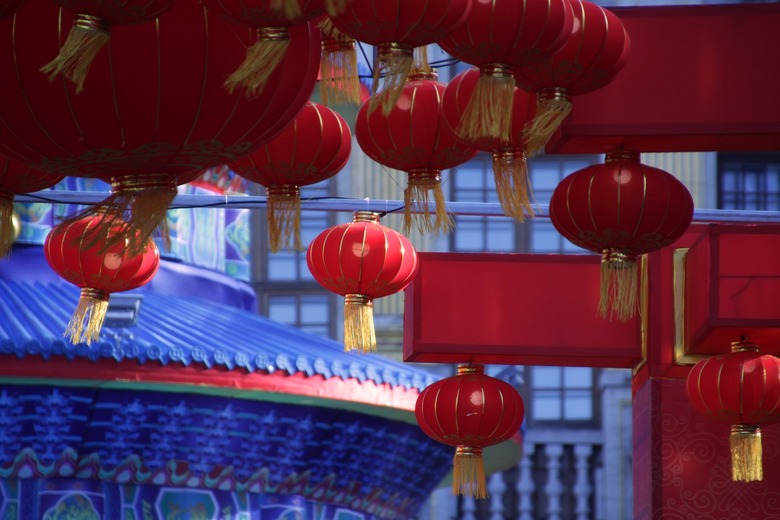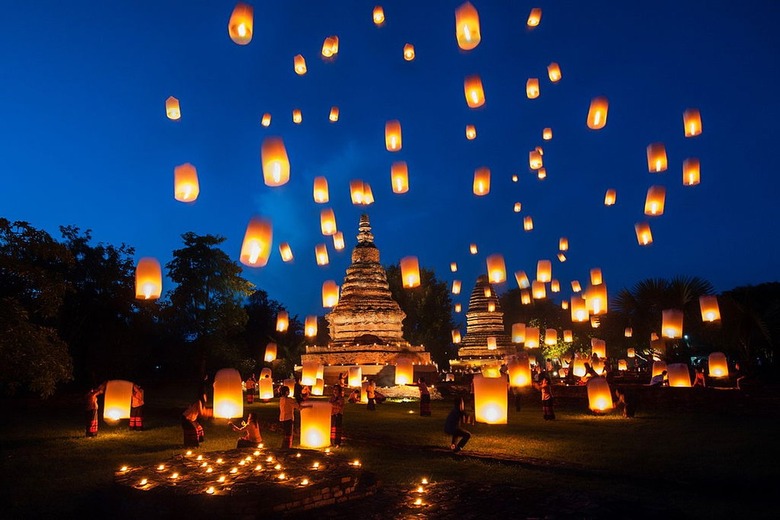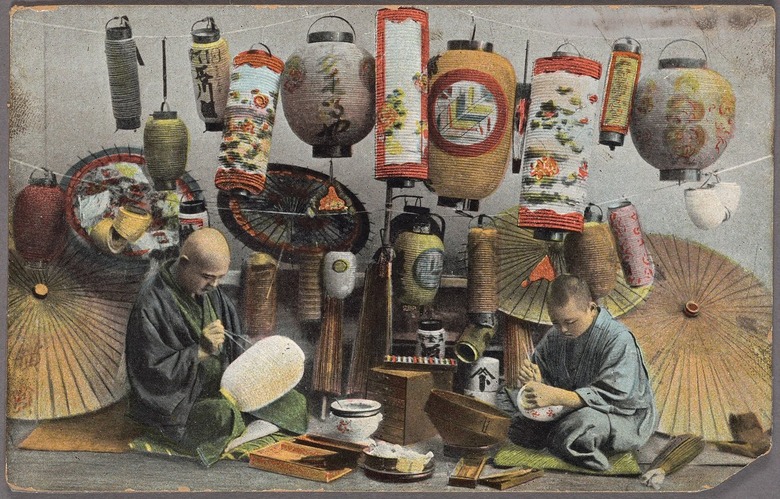Paper Lanterns Were Actually Invented For This Very Practical Reason
Paper lanterns are far more than just light sources or decorations at Chinese restaurants — they have thousands of years of history, and they're deeply imbued with symbolism. Since their inception some 2,000 years ago, the lanterns have served utilitarian, military, religious, and decorative purposes in cultures throughout Asia, eventually spreading around the world.
To celebrate Asian American and Pacific Islander (AAPI) Heritage Month, we're taking a look at the long history of Chinese paper lanterns.
Who Invented the Paper Lantern?
Who Invented the Paper Lantern?
Paper lanterns first entered the scene during China's Eastern Han dynasty, which lasted from 25 to 220 C.E. At that time, the paper shade (which was sometimes made of silk, not paper) was used to prevent the wind from blowing out a candle.
But as they were a blank canvas, people began to decorate these lanterns, painting them with Chinese characters. Some even used them to advertise businesses, according to the Chinese Language Institute (CLI). Legend also suggests that the military might have used sky lanterns — miniature hot air balloons — as a messaging system, per CNN.
What Are the Different Types of Paper Lanterns?
What Are the Different Types of Paper Lanterns?
There are three different types of paper lanterns: hanging lanterns, sky lanterns, and water lanterns. As their names suggest, hanging lanterns are hung from poles or beams, and they're typically used as practical lights as well as decorative (or even advertorial) items.
Sky lanterns have roughly the same construction as hanging lanterns, but rather than being tethered down, they're free-floating. When the candle inside the lantern heats up the air trapped within the paper shade, it lifts into the air just like a hot air balloon.
There are also water lanterns that float not in the air but on the water.
What Is a Lantern Festival?
What Is a Lantern Festival?
The original Chinese paper lanterns were quickly adapted by the Buddhists to be used in festivals, particularly for the holiday marking the end of Chinese New Year, celebrated on the 15th day and the first full moon of the year, according to Britannica. On that day — or rather, in the evening — Buddhists would light paper lanterns to honor Buddha.
Eventually, the tradition spread to the general population, which then used lanterns as a way to honor their ancestors on the same holiday. These lanterns were typically white, a color associated with death in Chinese culture. General-use lanterns, on the other hand, were often red, an auspicious color.
During the Tang dynasty (618 to 907 C.E.), people celebrating lantern festivals began using sky lanterns rather than hanging ones, per CLI, and the practice stuck.
Today, lantern festivals with sky lanterns are held around the world, particularly in Asia. While they're a beautiful sight to behold, they're also somewhat dangerous, as sky lanterns have been known to start fires when they fall back to the ground, according to DW. They also pose a threat to aviation, and there are pollution concerns. Some municipalities have even banned sky lanterns for these reasons. In South Carolina, for example, sky lanterns must be tethered to the ground so that they don't fly away and start a fire somewhere unmonitored.
How Did Paper Lanterns Evolve Over Time?
How Did Paper Lanterns Evolve Over Time?
The popularity of paper lanterns spread across Asia, with many cultures riffing on the Chinese tradition. In Japan, chochin paper lanterns were developed in the 16th century, becoming popular between the 17th and 19th centuries, according to Tokyo's Bureau of Industrial and Labor Affairs. These lanterns were often collapsible, and they were frequently hand-painted with a family crest, characters, or other art.
After hundreds of years, the popularity of the craft waned until the mid-20th century. American sculptor Isamu Noguchi visited the Japanese town Gifu, once a hub of chochin production, where the mayor commissioned the artist to help revitalize the industry. Noguchi developed the Akari light sculpture, a modern take on the traditional chochin named after the Japanese word for "light." The biggest change was electrifying the lanterns, bringing them fully into the 20th century. Akari light sculptures are still produced today.



